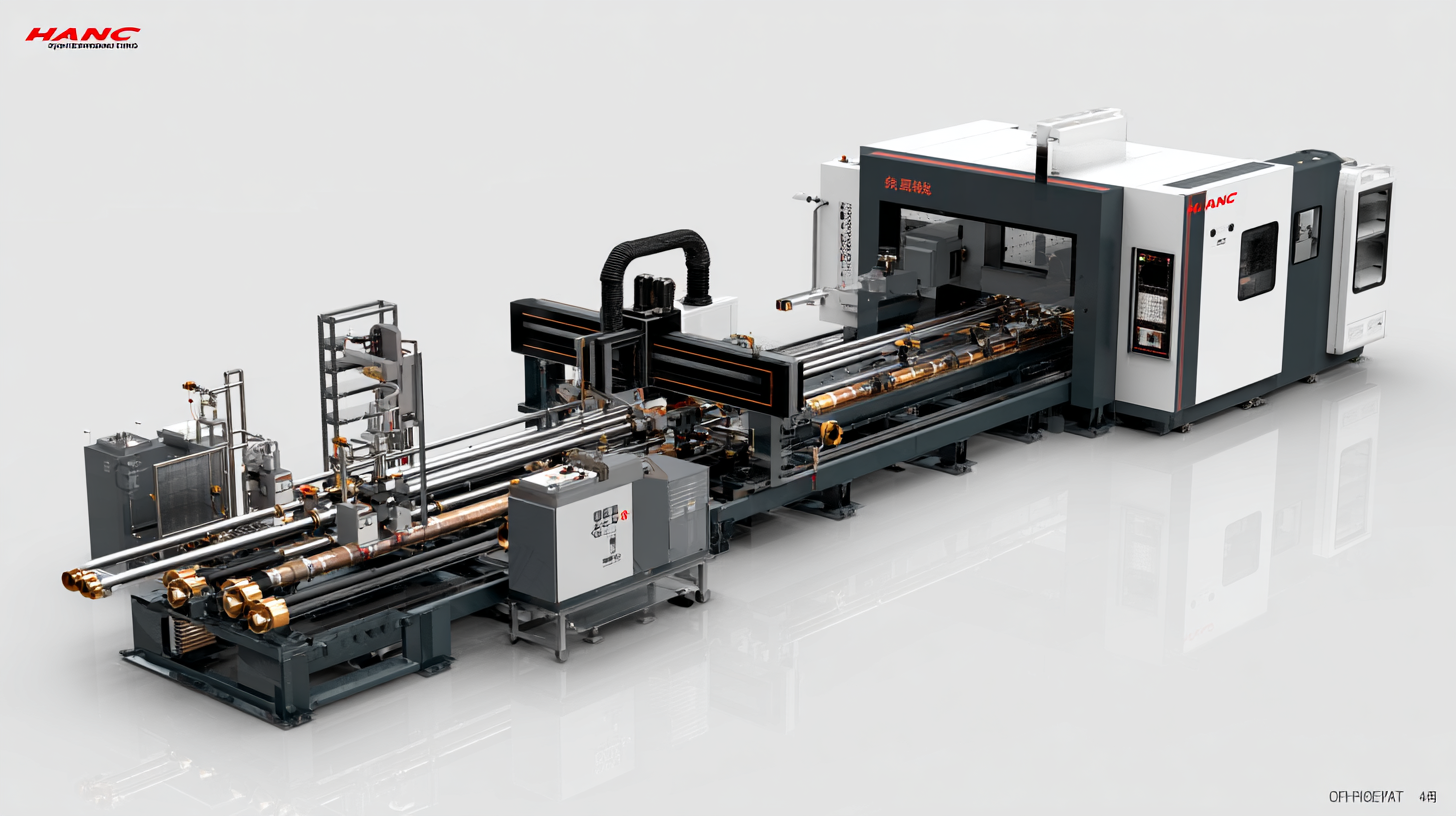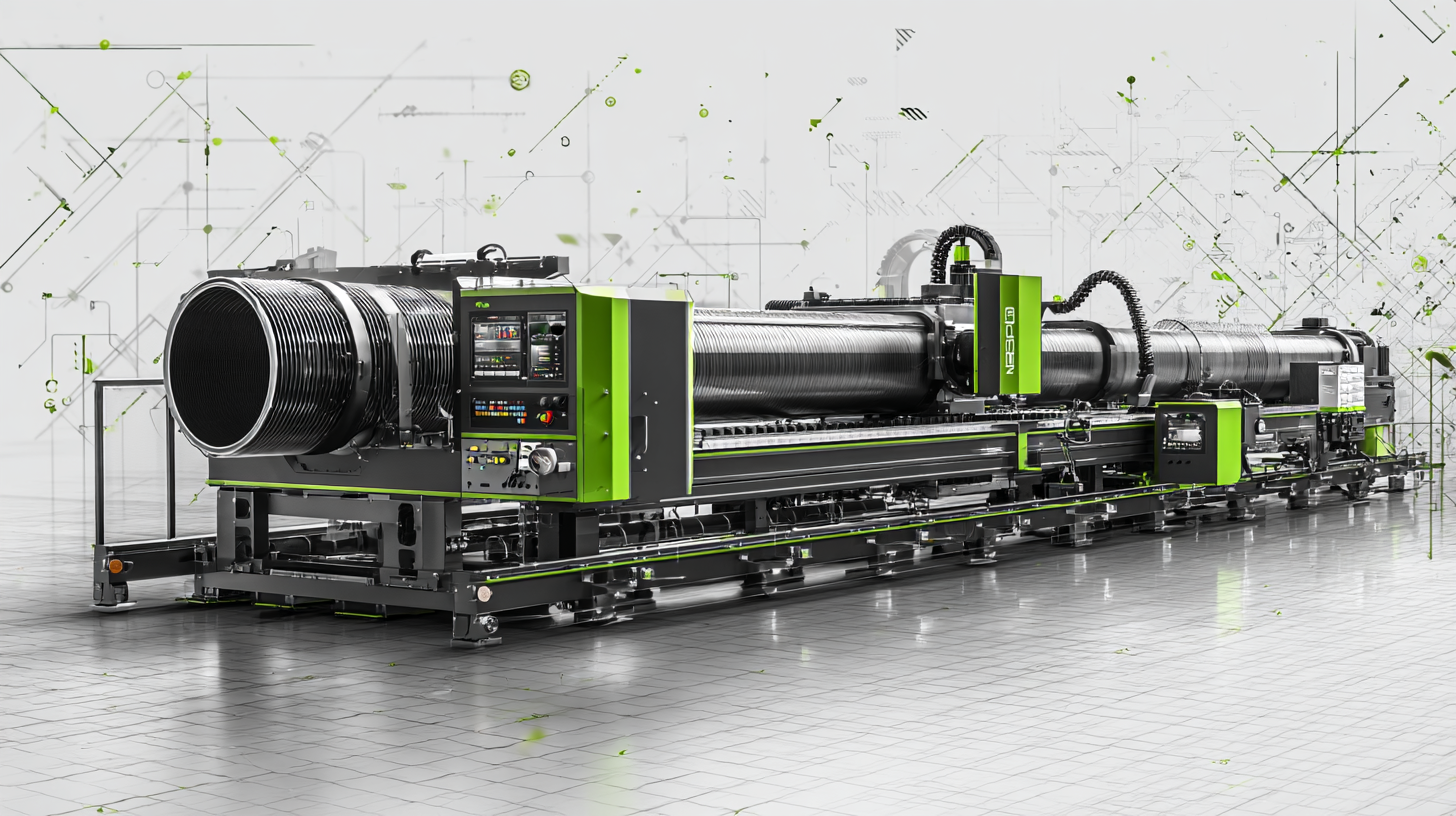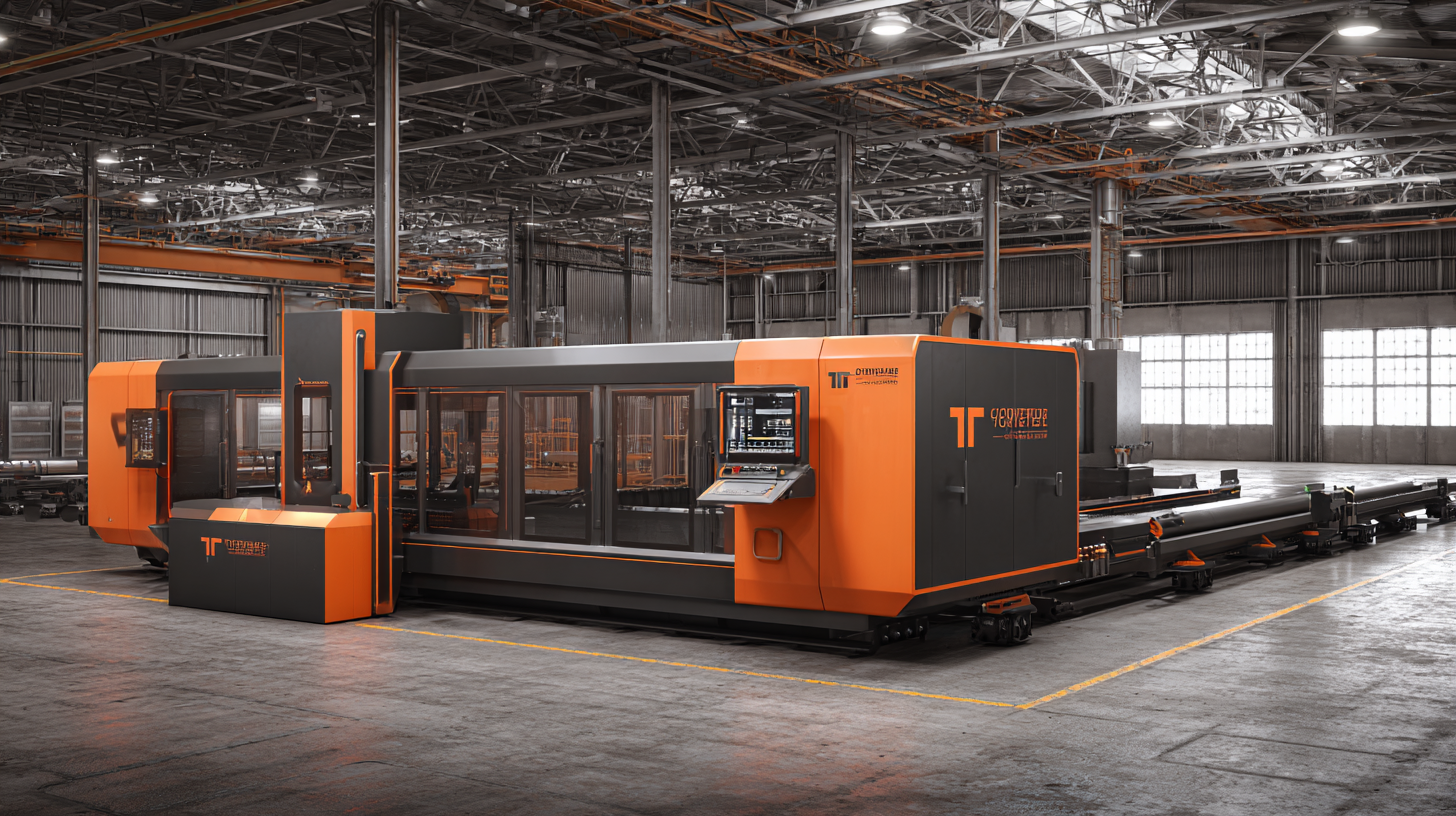Embracing 2025 Trends in CNC Pipe Cutting Machines for Next Level Efficiency and Innovation
As we step into 2025, the landscape of manufacturing is undergoing a profound transformation driven by technological advancements and innovative machinery. Among these, the CNC pipe cutting machine stands out as a pivotal player in enhancing operational efficiency and precision. According to the Global CNC Machine Market report, the CNC machinery sector is projected to grow at a CAGR of over 5% by 2026, underscoring the increasing reliance on automated solutions in metal fabrication industries. This trend is mirrored in the rising demand for CNC pipe cutting machines, which are not only streamlining production processes but also significantly reducing waste. Embracing the upcoming trends in this area is crucial for businesses aiming to stay competitive. By leveraging the benefits of state-of-the-art features such as advanced software integration and improved cutting capabilities, companies can achieve next-level efficiency and innovation, positioning themselves as leaders in the evolving manufacturing landscape.

Emerging Technologies Driving CNC Pipe Cutting Machine Innovations in 2025
As we look towards 2025, the landscape of CNC pipe cutting machines is set to transform dramatically, driven by a wave of emerging technologies. One of the most significant trends is the integration of artificial intelligence (AI) and machine learning. These technologies enable machines to learn from their operational data, optimizing cutting paths and minimizing waste. This not only enhances precision but also significantly reduces production times, empowering manufacturers to meet increasing demands with improved efficiency.
Another noteworthy innovation is the advancement in automation and robotics. CNC pipe cutting machines are becoming increasingly equipped with robotic arms that can handle complex cuts and intricate designs with greater speed and accuracy. This shift towards automation reduces the need for manual intervention, allowing skilled workers to focus on more strategic tasks. Additionally, the introduction of IoT (Internet of Things) capabilities enables real-time monitoring and predictive maintenance, ensuring machines operate at peak efficiency and reducing unexpected downtimes. As these technologies converge, they are setting the stage for a new era in the pipe cutting industry, emphasizing innovation and operational excellence.

Key Efficiency Metrics to Track for Optimal CNC Pipe Cutting Performance
In the rapidly evolving landscape of CNC pipe cutting technology, tracking key efficiency metrics is paramount for optimizing performance. According to a report by MarketsandMarkets, the global CNC cutting machine market is expected to grow from $6.5 billion in 2020 to $10.8 billion by 2025, reflecting an annual growth rate of 10.5%. This highlights the increasing reliance on CNC machines for precision and speed, making it essential for operators to monitor metrics like cutting speed, material waste, and machine uptime. These indicators provide insight into operational efficiency, enabling businesses to adjust processes for better outcomes.
Tip: Regularly evaluate your cutting speed against industry standards to identify any inefficiencies. Benchmarking against competitors can provide valuable context for your operations, allowing for targeted improvements.
Another critical metric to consider is material utilization. The International Journal of Advanced Manufacturing Technology reports that effective use of materials can reduce waste by up to 15%. Investing in advanced monitoring systems can help track real-time usage and optimize cutting patterns, which ultimately contributes to cost savings and sustainability.
Tip: Implement a cutting strategy that prioritizes the most efficient nesting of pipe segments to minimize scrap materials. This not only enhances efficiency but also improves your overall environmental footprint, a vital consideration for modern manufacturing.
Embracing 2025 Trends in CNC Pipe Cutting Machines for Next Level Efficiency and Innovation
| Efficiency Metric | 2023 Benchmark | 2024 Projection | 2025 Target |
|---|---|---|---|
| Cutting Speed (m/min) | 150 | 180 | 220 |
| Material Utilization (%) | 85 | 88 | 92 |
| Downtime (%) | 10 | 8 | 5 |
| Energy Consumption (kWh/m) | 4.5 | 4.0 | 3.5 |
| Precision (% variance) | 0.2 | 0.15 | 0.1 |
Integrating Smart Automation: A Must for Future-Proof CNC Operations
As the landscape of manufacturing evolves, integrating smart automation into CNC pipe cutting machines is no longer a luxury but a necessity for future-proof operations. The rise of Industry 4.0 has ushered in an era where machine learning, artificial intelligence, and the Internet of Things (IoT) converge to enhance operational efficiency. By adopting smart automation technologies, manufacturers can optimize their workflows, minimize errors, and improve production quality, significantly reducing downtime and operational costs.
Implementing advanced automation systems enables real-time monitoring and data analytics, empowering businesses to make informed decisions faster. These systems not only improve precision in cutting processes but also allow for predictive maintenance, thus extending the lifespan of equipment. With the ability to automate repetitive tasks, CNC operators can focus on more complex and value-added activities, fostering innovation and creativity in their processes. Embracing these advancements not only enhances productivity but also positions companies to adapt swiftly to changing market demands, ensuring sustained competitiveness in the years to come.
Sustainability Trends Shaping the Future of CNC Pipe Cutting Machines
The landscape of CNC pipe cutting machines is being profoundly reshaped by sustainability trends, which are becoming essential for manufacturers looking to enhance efficiency and reduce their environmental footprint. According to a recent report by MarketsandMarkets, the global CNC machine market is expected to grow from $79.2 billion in 2021 to $102.5 billion by 2026, with sustainability initiatives driving a significant portion of this growth. As companies increasingly adopt eco-friendly practices, innovations such as energy-efficient motors and recyclable materials are being integrated into CNC pipe cutting technology, enabling operators to reduce waste and lower energy consumption.

In addition to energy efficiency, advancements in software are helping manufacturers optimize their cutting processes, thereby minimizing material wastage. A study by McKinsey & Company highlighted that smart manufacturing technologies, including AI and IoT, can improve resource utilization by up to 20%. These technologies offer real-time analytics and predictive maintenance, ensuring CNC machines operate at peak performance while keeping sustainability at the forefront. As businesses look towards 2025 and beyond, embracing these sustainability trends in CNC pipe cutting machines not only aligns with global environmental goals but also enhances competitive edge in the evolving manufacturing landscape.
Essential Checklist for Upgrading Your CNC Pipe Cutting Equipment by 2025
As we approach 2025, the landscape of CNC pipe cutting technology is evolving rapidly, making it essential for manufacturers to assess their equipment and embrace modern advancements. Upgrading your CNC pipe cutting machines can significantly enhance efficiency and precision in your operations. To ensure a smooth transition into the next phase of industrial innovation, it’s essential to have a comprehensive checklist that addresses both the technical and operational aspects of upgrading.
Start by evaluating your current machinery’s capabilities and identifying specific areas for improvement. Consider investing in machines that offer advanced features such as automated software integration, improved cutting speeds, and better material handling systems. Additionally, focusing on energy-efficient technologies and eco-friendly practices can not only reduce operational costs but also align your business with sustainable industry trends. Training your staff on the latest equipment will further maximize productivity and ensure that your team is well-equipped to handle the rising complexity of modern CNC systems. Embracing these trends and following a structured checklist will position your business for success in 2025 and beyond.
